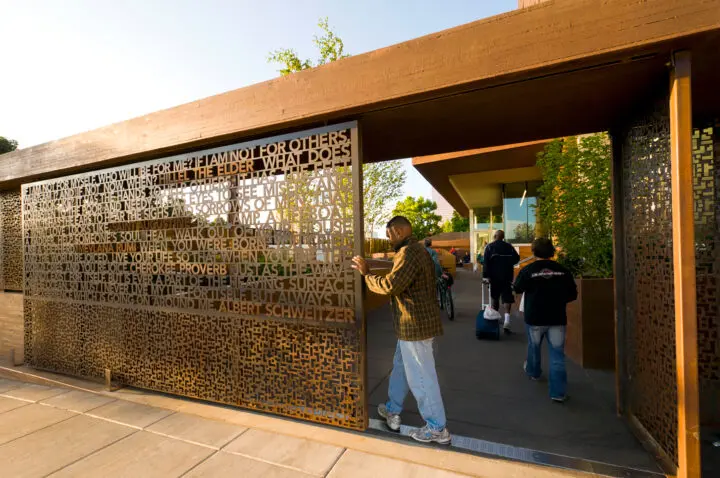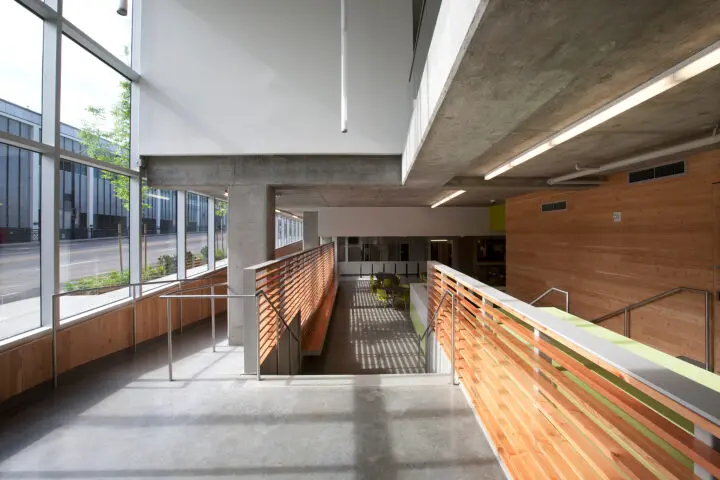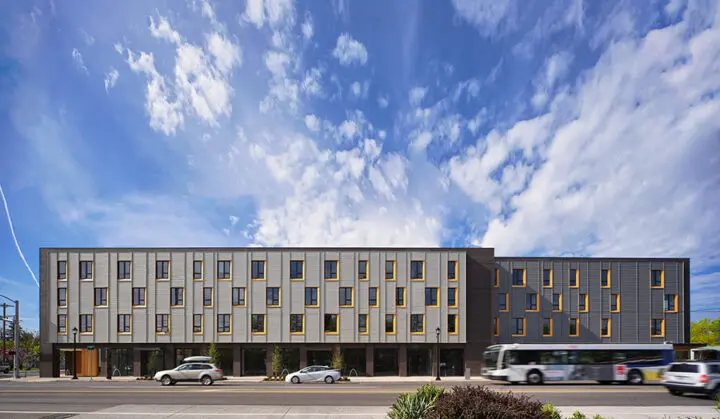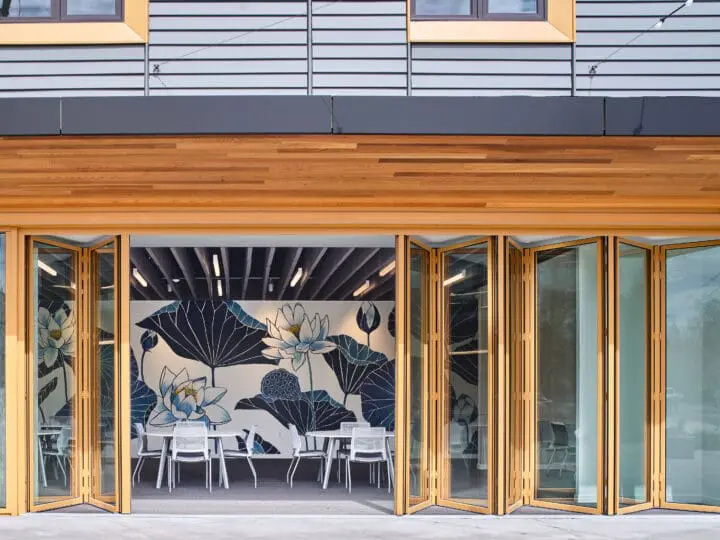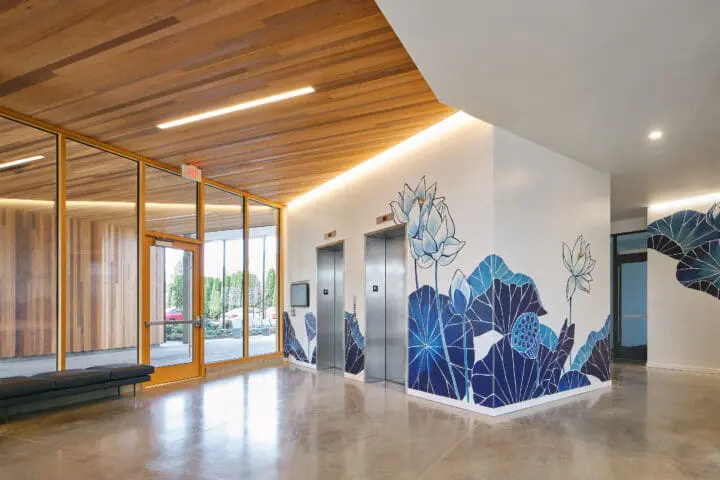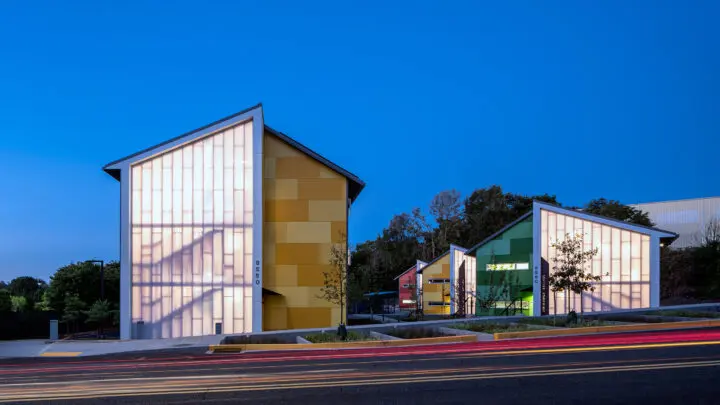Housing is Healthcare
The connection between housing and healthcare has become increasingly apparent in the past decade and even more critical during the current pandemic. Studies show that unhoused populations are more likely to have adverse health conditions and that added health stress can lead to chronic houselessness. In the past decade, we have seen short-term and chronic houselessness increase steadily, and Oregon has some of the highest rates in the country. According to the Department of Housing and Urban Development (HUD), seventeen out of 10,000 people in the US are currently experiencing houselessness. In Oregon, that rate grows to 38 out of 10,000; in Multnomah County, the rate is a staggering fifty out of 10,000 people.
Architects & the Houselessness Crisis
As architects, our work is intrinsically linked to the housing crisis. From individual housing projects to large-scale urban planning, we have the opportunity to design creative and dignified solutions that make the most of available resources and help curb the rate of houselessness. At Holst, we find the statistics sobering yet solvable, and we are driven to do as much as we can to affect change by supporting our clients’ missions through our work, advocacy, philanthropy, and volunteerism.

Designing Supportive Housing with Nonprofit Partners
Holst has partnered with numerous nonprofit organizations to bring housing and resources to our community’s most vulnerable members. We fundamentally believe that we must foster strong partnerships with shared vision and goals to do this work. We must listen to understand the needs not only of the organization with whom we partner but also of the communities that these projects serve. By listening, we are able to design beautiful, innovative, and dignified homes that work for those who need them most.
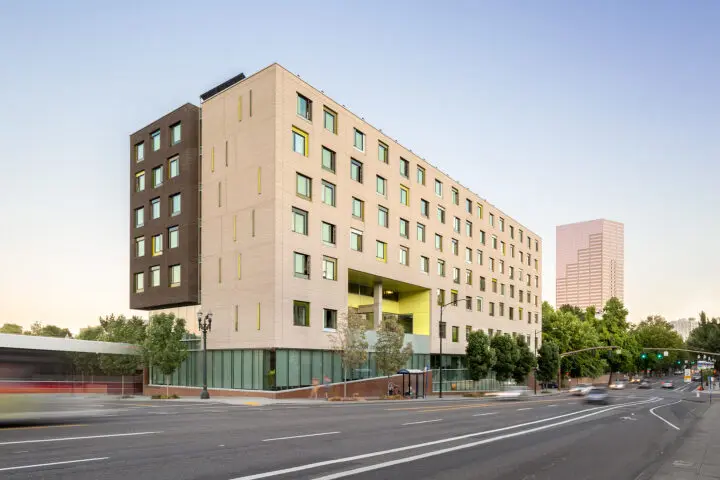
Bud Clark Commons
Bud Clark Commons is a groundbreaking project that provides a continuum of care from essential off-the-street services to permanent supportive housing. Located on the Broadway corridor in NW Portland, it provides services to some of the most vulnerable members of our community. Since 2011, the Day Center has served approximately 4,000 unique individuals annually, and numerous housing residents have transitioned into independent permanent housing. City data also shows that residents see a 50% decrease in Medicaid spending in the first year of occupancy and near the national average of spending after two years of occupancy.
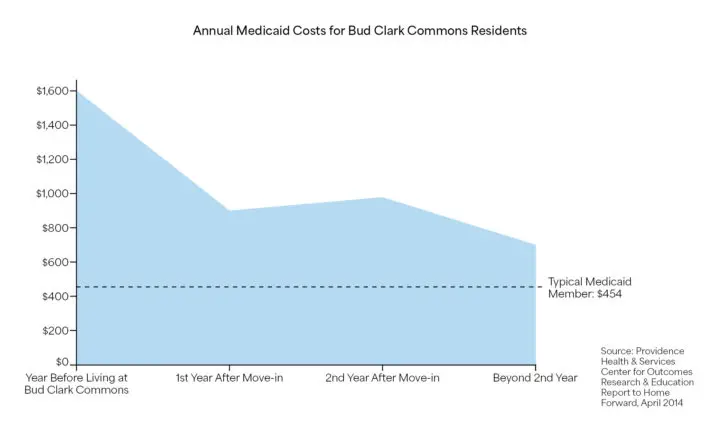
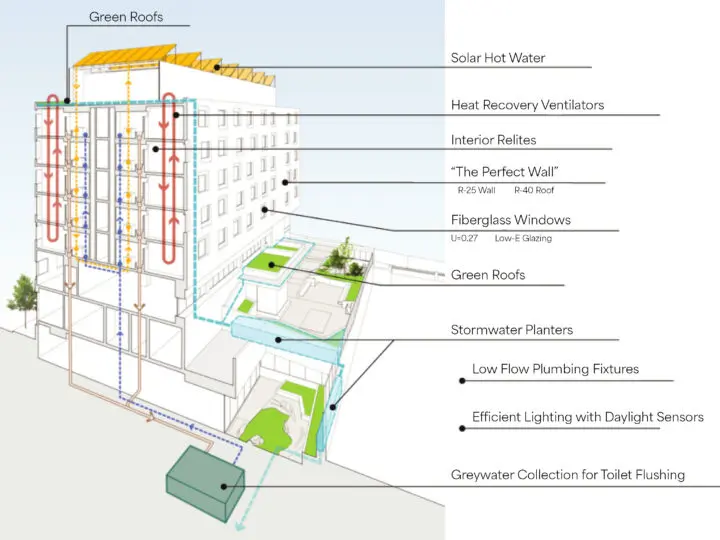
Designing for Durability & Sustainability
An important part of creating long-term solutions to housing insecurity is to consider the operation and maintenance of a building, as well as the building’s environmental impact. Bud Clark Commons employs a balance of design, durability, and sustainability that allows it to provide essential housing for decades to come. The design team was thoughtful in the selection of materials and organization of spaces to create an uplifting, environment that allows access to air and natural light, while also serving the building’s operational needs.
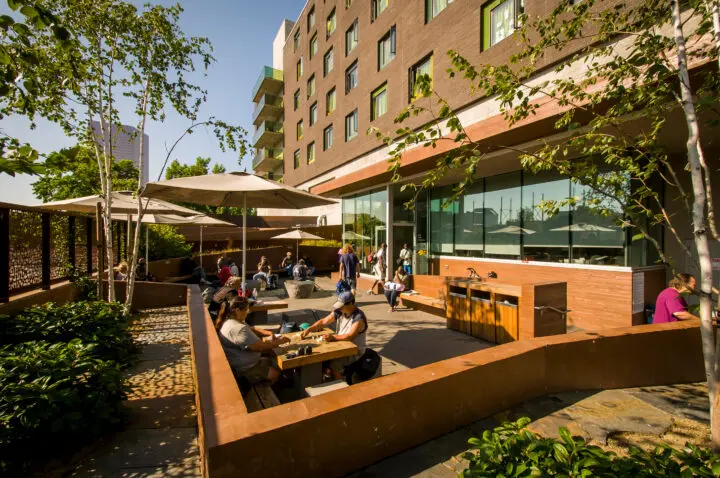

72Foster
72Foster is an affordable multifamily housing project in the Mt. Scott Arleta neighborhood of SE Portland developed by REACH CDC and targeted to Asian and Latinx households. This neighborhood has seen a large influx of displaced individuals and families, who can experience deep migration trauma as they try to establish new community connections and a sense of belonging. Our design team worked closely with local community organizations to learn what steps we could take to minimize trauma and help potential residents feel at home.
Intergenerational Housing
Community members taught us that housing needs for Asian and Latinx households differed from what we saw as “standard” housing; they are more likely to be intergenerational and require space to host family and community gatherings. The project has a unique combination of studio, one-, two-, and three-bedroom apartments with larger units targeted towards families with young children and smaller units targeted towards seniors. We designed a robust ventilation system inside each unit to accommodate specific cooking needs. On the ground floor, a large community room opens to a public courtyard, and a wood-clad passthrough connects the community to the neighboring Portland Mercado. Murals by local artist Haruka Ostley bring beauty and liveliness to public spaces.

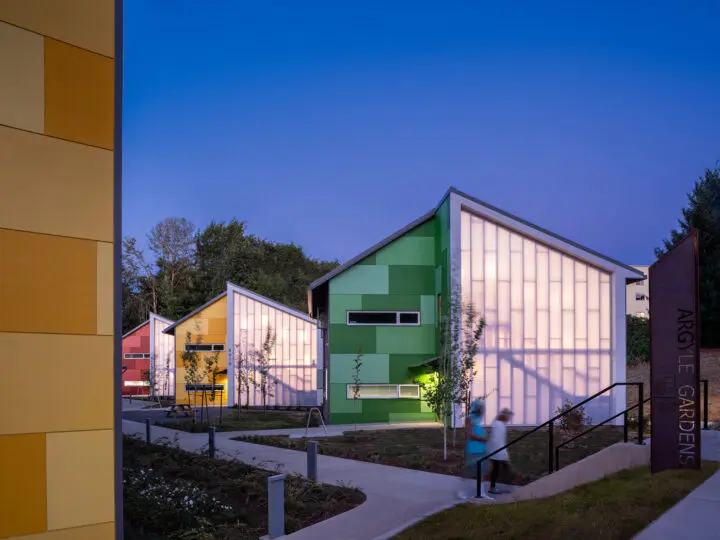
Argyle Gardens
Informed by lessons learned from Bud Clark Commons and research on transitional housing best practices, Holst worked with Transition Projects to develop a new model for infill transitional housing called LISAH (Low Income Single Adult Housing). Designed as a kit of parts, LISAH employs a modular system that can be configured in different ways to serve numerous populations including the houseless, workforce, seniors, and students. Located in North Portland’s Kenton neighborhood, Argyle Gardens is the first buildout of LISAH.
How LISAH Works
Many residential housing codes define one housing unit as a maximum of six individuals, which is also ideal for fostering a sense of community in co-housing developments. One LISAH building can provide housing for 12 individuals in residential zones that allow for duplex development, making it an ideal design for affordable infill development. Because exterior cladding and roofing occur onsite, materials and roof shapes can be tailored to individual neighborhoods so as not to disrupt the character of surrounding buildings.

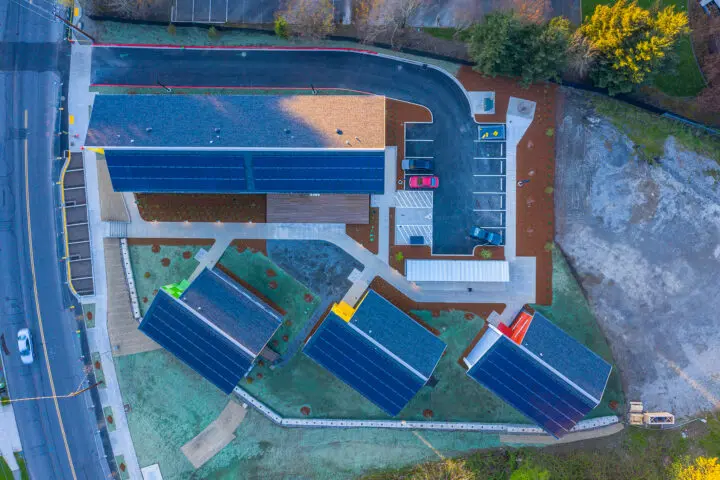
Creating Argyle Gardens
Argyle Gardens is made up of several modules that were construed off-site by MODS PDX, moved, and then assembled on-site by Walsh Construction. The project is reserved for individuals transitioning out of houselessness, with a mix of studio and co-housing units with a large community room and shared laundry services. Small, manageable unit sizes with built-in furniture and on-site resident services support the unique needs of residents transitioning out of long-term houselessness. The project was fully occupied within a month of opening, and residents have described feeling at home in a supportive community. We hope the project will inspire additional LISAH developments to rapidly increase affordable housing opportunities.
A Multifaceted Approach to Solving the Houselessness Crisis
Ultimately, these projects demonstrate the all-hands-on-deck approach that is necessary to solve our houselessness crisis in multiple ways. Additionally, they highlight the clear connection between adequate housing and improvements in health – two human rights that have been commoditized in our society for too long. Finally, they demonstrate that Americans are often given a false choice between affordability and quality. We can have both if our local and national leaders have a long-term vision and commitment. At Holst, we look forward to being part of this long-term solution by continuing to create meaningful architecture that people love.

